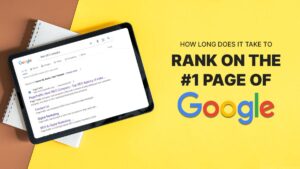To rank on Google’s Page 1, the content needs to be high quality, relevant, well-optimized for SEO, and properly sourced. Here’s a step-by-step breakdown:
How to Write a High-Ranking Article for Google’s Page 1
1. Keyword Research
- Identify Target Keywords: Use tools like Google Keyword Planner, Ahrefs, or SEMrush to find relevant and high-volume keywords in your niche.
- Long-Tail Keywords: Focus on long-tail keywords (phrases with 3+ words) that are more specific but also have good search volume.
- Search Intent: Understand what users are looking for when they search a specific query, and tailor your content to address their needs.
2. Craft a Compelling Title
- Clear and Descriptive: Make sure your title reflects the main topic of the article and includes the primary keyword.
- Avoid Clickbait: Ensure the title is genuine and provides value.
- Include the Primary Keyword: Place the main keyword toward the beginning of the title.
3. Write High-Quality Content
- Clear and Concise: Ensure your content is well-structured, easy to read, and provides value.
- Comprehensive: Cover the topic in-depth, answering all potential questions your readers may have.
- Original Content: Avoid copying or paraphrasing from other sources. Google prioritizes fresh, original content.
4. Use Credible Sources
- Primary Sources: Always use authoritative and credible sources like academic journals, government websites, and trusted industry blogs.
- Secondary Sources: For supporting evidence, link to established news outlets (e.g., BBC, Reuters), established industry leaders, and niche experts.
- Cite Your Sources: Properly cite and provide links to the original sources in the article, improving trustworthiness and authority.
5. SEO Optimization
- Keyword Placement: Place your keywords naturally throughout the article—especially in the title, headers, and the first 100 words.
- Meta Description: Write a clear meta description with the target keyword. This is what shows up on search engine results.
- Internal and External Links: Link to other pages on your website and credible external sources. This helps with SEO and provides further value to the reader.
- Alt Text for Images: If your article includes images, ensure they have descriptive alt text that includes your target keywords.

6. Structure and Formatting
- Headers: Use headings (H1, H2, H3) to break down the content into readable sections.
- Bullet Points and Lists: Break complex information into digestible bullet points.
- Short Paragraphs: Keep paragraphs short and easy to read. Google prefers content that is user-friendly.
7. Mobile Optimization
- Mobile-Friendly Design: Ensure that your article is easy to read on mobile devices, as mobile searches account for a large percentage of Google traffic.
- Fast Loading Speed: Use tools like Google PageSpeed Insights to test and optimize the loading speed of your page.
8. User Engagement
- Clear Call to Action (CTA): Encourage readers to comment, share, or take further actions related to your content.
- Engagement Signals: Google considers engagement metrics like time on page and bounce rate. Make your content engaging and interactive.
9. Update and Refresh Content
- Regular Updates: Regularly update your content to keep it relevant. Google prioritizes fresh, current content.
- Monitor and Improve: Use Google Analytics to track how your article is performing and make improvements where necessary.
10. Social Proof and Backlinks
- Backlinks: Having reputable websites link to your article improves your content’s authority.
- Social Shares: Promoting your content on social media platforms can also help boost its ranking.
Example Structure of a Google-Friendly Article
Title: How to Rank on Google’s Page 1: A Step-by-Step Guide
Ranking on Google’s Page 1 requires a combination of technical expertise, quality content, and a strategic approach to SEO (Search Engine Optimization). Here’s a step-by-step guide:

Understand Your Target Audience and Keywords
- Research Keywords: Use tools like Google Keyword Planner, Ahrefs, or SEMrush to find high-volume, low-competition keywords relevant to your niche.
- Analyze Intent: Understand the search intent (informational, transactional, or navigational) behind the keywords.
- Long-Tail Keywords: Focus on long-tail keywords that are easier to rank for and align with specific queries.
Optimize On-Page SEO
- Meta Tags: Craft compelling and keyword-rich titles and meta descriptions.
- Header Tags (H1, H2, H3): Use headers to structure your content logically and include keywords naturally.
- URL Structure: Keep URLs short, descriptive, and keyword-optimized.
- Internal Linking: Link to other relevant pages on your site to enhance navigation and spread link equity.
- Image Optimization: Use descriptive file names, add alt text, and compress images for faster load times.
Create High-Quality, Relevant Content
- Solve Problems: Write content that addresses your audience’s pain points and provides actionable solutions.
- Length and Depth: Longer, in-depth content tends to rank better, but prioritize quality over word count.
- Multimedia: Include images, videos, and infographics to enhance user engagement.
- Regular Updates: Keep your content fresh and up-to-date.
Focus on Technical SEO
- Mobile Friendliness: Ensure your website is responsive and works seamlessly on all devices.
- Page Speed: Use tools like Google PageSpeed Insights to optimize load times.
- Secure Website (HTTPS): Secure your site with an SSL certificate.
- Fix Errors: Identify and fix crawl errors using Google Search Console.
- Structured Data: Implement schema markup to improve how your site appears in search results.
Build High-Quality Backlinks
- Guest Blogging: Write guest posts for authoritative websites in your niche.
- Outreach: Contact bloggers and site owners to request links to your content.
- Broken Link Building: Find and replace broken links on other sites with links to your content.
- Create Link-Worthy Content: Publish studies, infographics, or resources that naturally attract backlinks.
Optimize for Local SEO (If Applicable)
- Google Business Profile: Set up and optimize your Google Business Profile with accurate information.
- Local Keywords: Include location-specific keywords in your content.
- Citations and Reviews: Build citations on local directories and encourage customer reviews.
Monitor and Analyze Performance
- Google Analytics: Track traffic, user behavior, and conversions.
- Google Search Console: Monitor impressions, clicks, and technical issues.
- Rank Tracking Tools: Use tools like Ahrefs or SEMrush to track keyword rankings.
Stay Updated with Google Algorithm Changes
Google regularly updates its algorithms. Stay informed about updates like Core Web Vitals, E-A-T (Expertise, Authority, Trustworthiness), and others by following reputable SEO blogs like Moz, Neil Patel, or Google’s official Search Central.
Promote Your Content
- Social Media: Share your content across social platforms to drive traffic.
- Email Marketing: Use newsletters to distribute new content.
- Engage in Communities: Participate in forums or communities like Reddit or Quora to share your expertise.
Be Patient and Consistent
SEO is a long-term strategy. Continuously optimize your site, produce quality content, and adapt to new trends to see consistent improvements in rankings.
